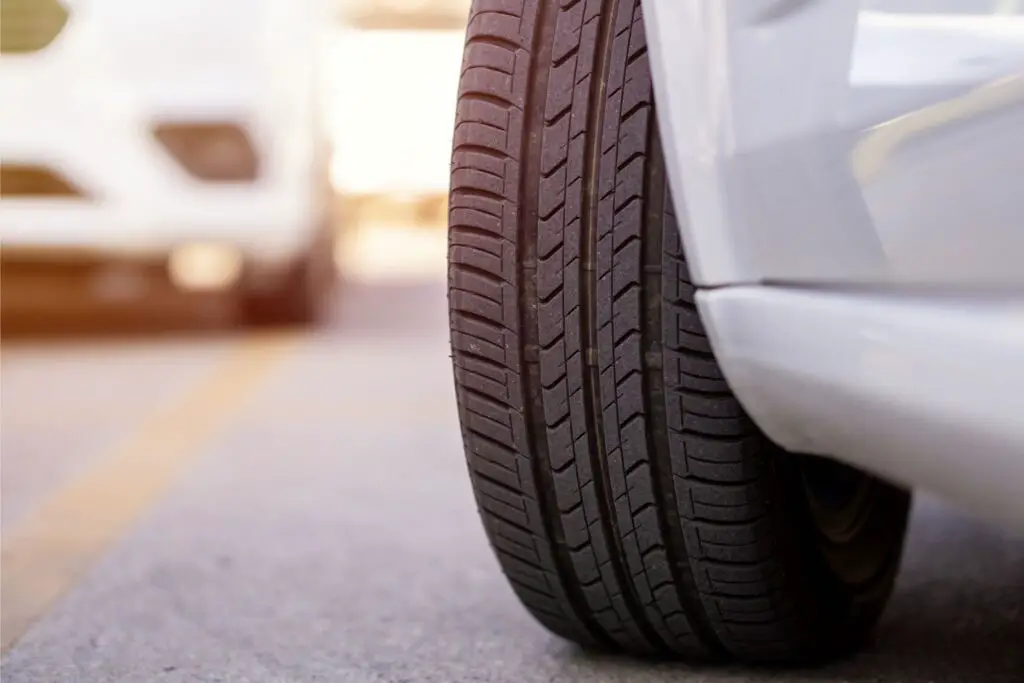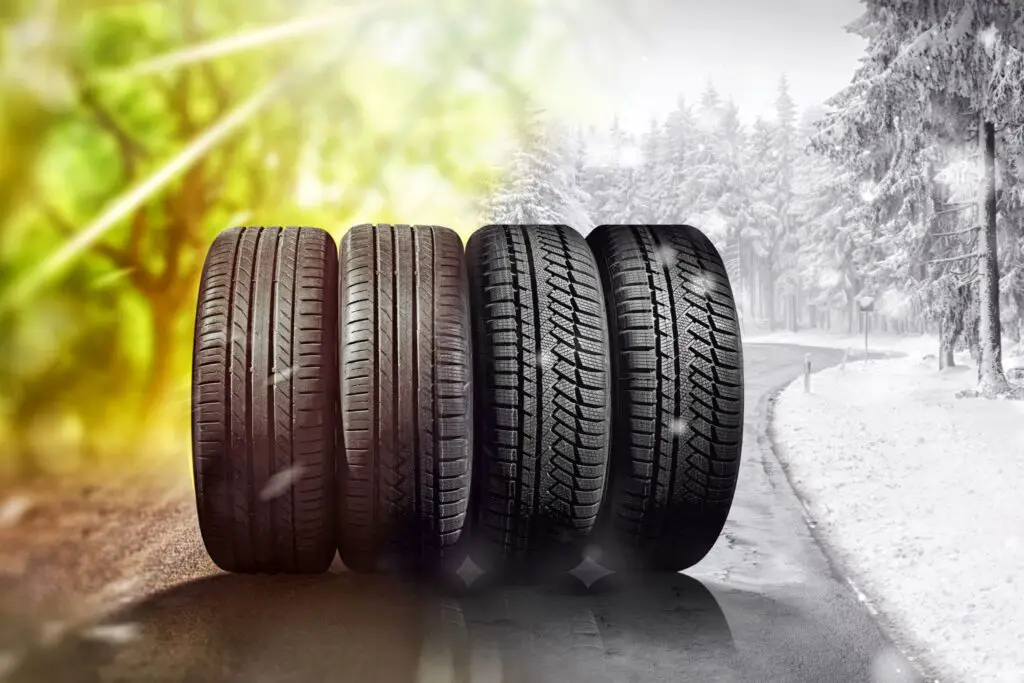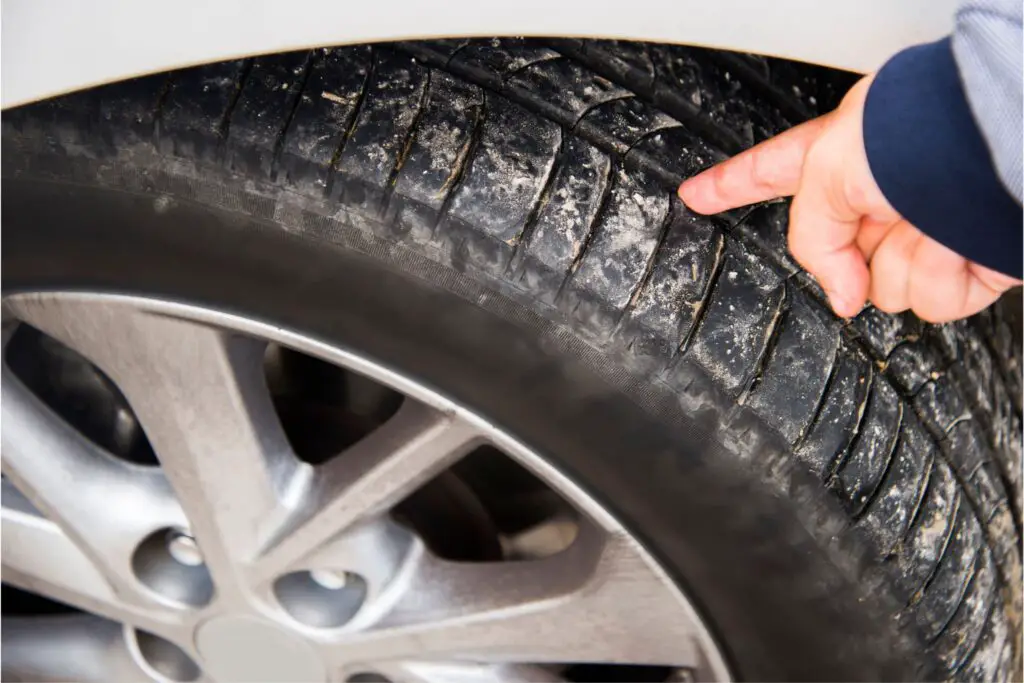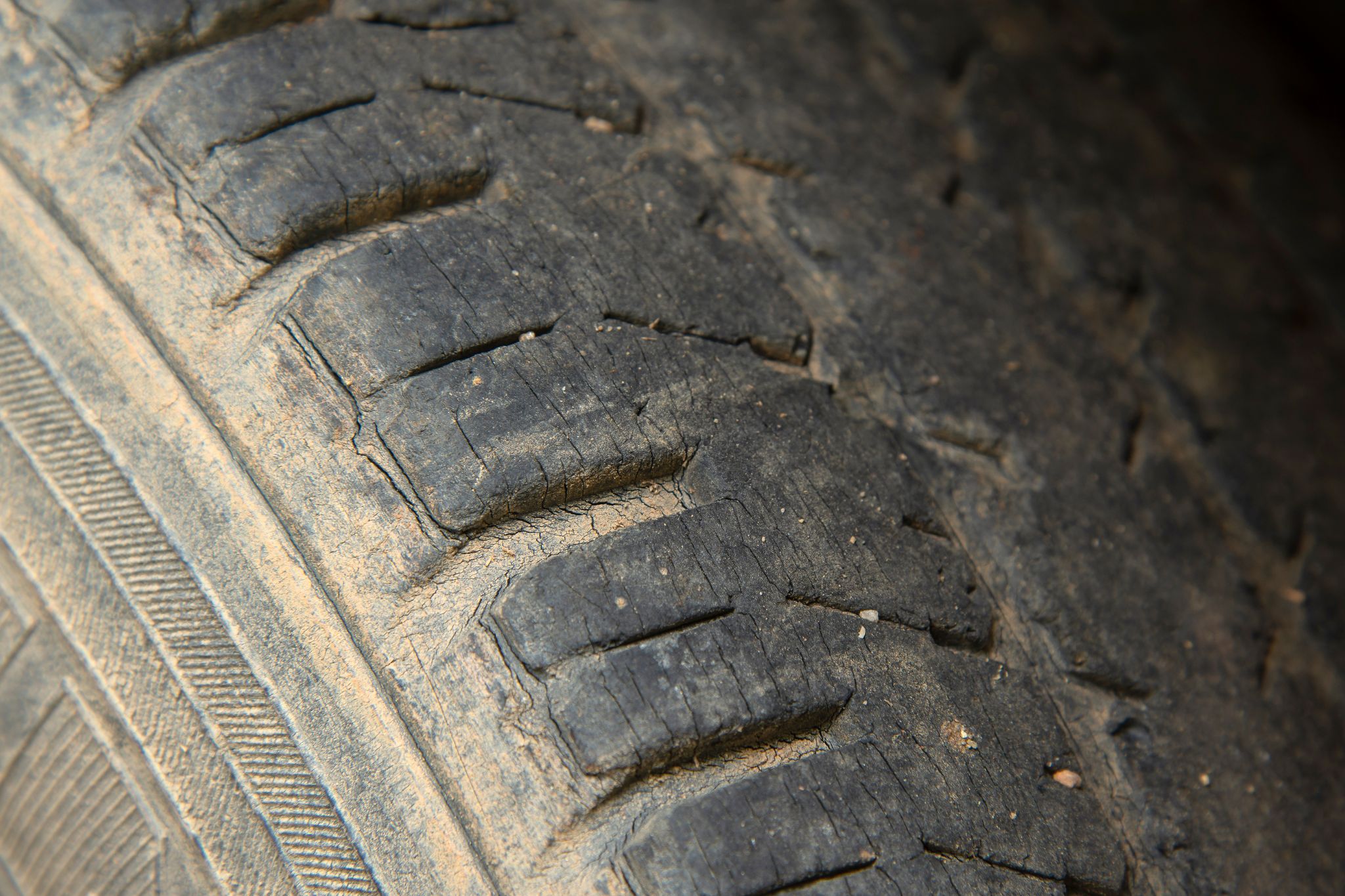When it comes to driving safety, tires can be a major concern. Tires can develop cracks, slow leaks, and even blow out.
So are cracks between tire tread unsafe?
In this article, you are going to learn more about why cracks form in tires, how they affect your driving, and what you should do if you have a tire with a crack.
Cracks in tires are caused by a variety of factors, ranging from stress on the tire to sheer temperature changes. All these can cause cracks to form between the treads.
The tire of a wheel is held together by an internal layer of rubber, and from there the tire’s outer surface is covered by the tread. The tread is made up of small vertical grooves that are cut into the rubber which helps in improving the grip.
Are Cracks Between Tire Tread Unsafe
Cracks between the tire tread can be unsafe to drive on, especially if the tire is damaged in other ways.
One reason why it is unsafe to drive on a cracked tire is the tread loses its ability to grip the road. Driving on a slippery road can be dangerous especially when you are driving at high speeds.
Another reason why cracks between the tire tread will cause damage to your tires and wheels is that it causes stress concentration in that area of the tire.
With more stress being placed in one spot, cracks can easily appear there and spread throughout the whole casing of the tire.
Also, cracks may cause a flat tire which might be a result of leakage. This is especially the case if you are driving on a freeway and the tire leak gets worse. The blowout will cause the tire to lose air, and you can end up losing control of your car or even crashing into another vehicle.
Cracks between tire treads can also be dangerous if you have an old tire. This is because it will be uneven, making it susceptible to the road.
An uneven tire is also a sign that the tire can’t grip the road as well as it should, and this means accidents or a bad experience from driving.
Cracks can also cause other problems with your car, such as decreased fuel mileage or even overheating of the engine. The best thing to do if you think cracks are developing in your tires is to call for their repair immediately and have them fixed by professionals fast.
Can You Drive on Tires With Cracks Between Treads?


It is not recommended by most car manufacturers or tire manufacturers. Driving with cracked tires can be dangerous.
At higher speeds, the tire can lose its grip and cause a flat tire or possibly lose its air.
But, if you are driving on a highway and the tire is overheating or there is a small leak, you may be okay to drive.
Also, the severity of the crack of the tire can determine if you can drive on it. A small crack may not affect your driving experience, but a large crack with extensive damage will cause you to lose control of your vehicle.
You can drive on a cracked tire if you have to, but it’s best to have your mechanic check out the tires and see if they can be repaired or replaced.
If you cannot afford a new set of tires or you are in an emergency situation, call roadside assistance for help.
Is it Safe to Drive With Tires That Have Visible Cracks?
Visible cracks can be very dangerous to drive on. When cracks are visible, it means that they are more easily damaged. If the tire is completely broken, the tread can no longer be gripped.
Cracks can also cause your tires to lose air and give you a flat tire. While it may be okay to drive on them with a little damage, it isn’t good for your car because you won’t have the same grip as before, and possibly will cause a flat tire.
You may even damage other parts of your car, such as your ball joints since it will be crooked.
Cracks in the tread can also cause other safety problems, such as uneven traction on the road which makes it more likely you will lose control of your vehicle and cause an accident.
Below is a table to help you determine whether your tire cracks are safe or not.
| Type of crack | Is it safe to drive? |
|---|---|
| Normal wear and tear | Yes |
| Small, surface-level cracks | Yes |
| Large, deep cracks | No |
| Cracks that extend across the tire tread | No |
| Cracks that show cords or fabric | No |
| Excessively numerous or wide cracks | No |
There you go.
Should I Get New Tires if They Are Cracked?


It is advisable that you get new tires if they have cracks, as it is too dangerous to drive on. It is best to take them to a tire repair shop and have them professionally checked out to determine if they need to be replaced or repaired.
If the tire can be repaired and the crack does not grow in size, you can still drive on it with some damage until you find a new set of tires for your car.
Driving on new tires will also create confidence in your car’s grip and ability to drive on the road. You won’t be worried while you are driving because your tires will be brand new and will give you a comfortable drive.
Is it Normal for the Tire Tread to Crack?
It is not normal for the tire tread to crack. The rubber in the tire is very durable.
So, when the outer surface of the tire gets damaged and cracks develop that go through the tread, this means there is a problem with the car.
There might also be a problem with the brand of tires you are using. Some brands are known to be more durable than others.
So, if you notice cracks in your tire tread, consider switching to a different brand that has a history of being more durable and long-lasting.
What Causes Tires to Crack in the Tread?


There are several causes that can cause the tire to crack in the tread.
Below are some of the things that cause tires to crack in the tread;
Excessive weight: like if you are carrying too many groceries or if you are going on a long trip and have your car loaded up with luggage, camping equipment, or sports equipment.
Poor road conditions: like potholes or cracks that form in the asphalt, your vehicle tires may rub against these issues which can also damage them.
Temperature changes also affect road conditions. When it’s cold outside, it becomes harder to drive as the tires get stiffer and start having problems gripping the road.
Poor vehicle conditions: like improper alignment or improper tire inflation can also cause tires to crack in the tread. This means that the tread is being pressed against the road and has no support to hold it together.
This is especially true with improper tire inflation, as your tires will be underinflated and need more air to keep them inflated.
How Do I Stop My Tires From Cracking?
There are several things you can do to stop your tires from cracking.
First, make sure that your vehicle is not overloaded. If you are carrying too much cargo or extra weight, this can cause your tread to crack.
Also, take good care of your tires and make sure that they are properly inflated and aligned. This is how you know if you have good tire care by using a tread depth gauge.
You should also check the temperature of the road before driving on it. When it’s very hot out and the pavement is very hot too, this will wear down the tires faster than when it’s cooler out because of the expansion between tire rubber and the road.
When the temperature is cooler, the tire rubber will actually get smooth and semi-flexible, making it less likely to cause cracks.
It is also to keep your vehicle in good condition by having regular maintenance, such as proper alignment, wheel balancing, and tire pressure inflations. You should also avoid driving on rough roads.
Conclusion
So are cracks between the tire tread unsafe to drive on? The answer is yes, it can be and that is because of how easily they can be damaged.
However, cracks in the tread are not as bad as complete blown-out tire treads and they should not be considered a danger to driving on.
It will depend on the severity of the cracks in the tread and on other factors, such as the amount of damage to your car or whether you are carrying heavy objects.
When tires break down or have excessive wear, you need to take them to a mechanic for replacement.
This post contains affiliate links. Read the full disclosure here.


I am passionate about all things automotive and have a deep understanding of the topic. As a mechanic, I use my free time to share knowledge of everyday challenges that any car owner can experience – helping you make informed decisions about tires.

